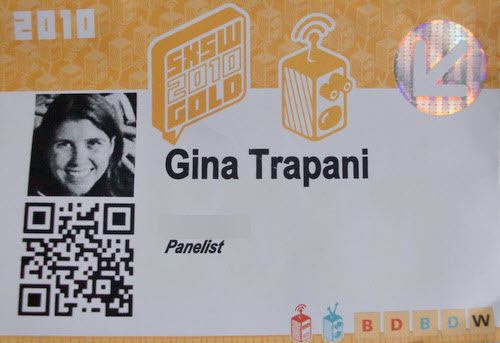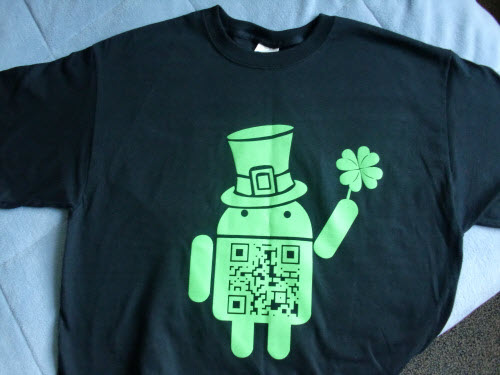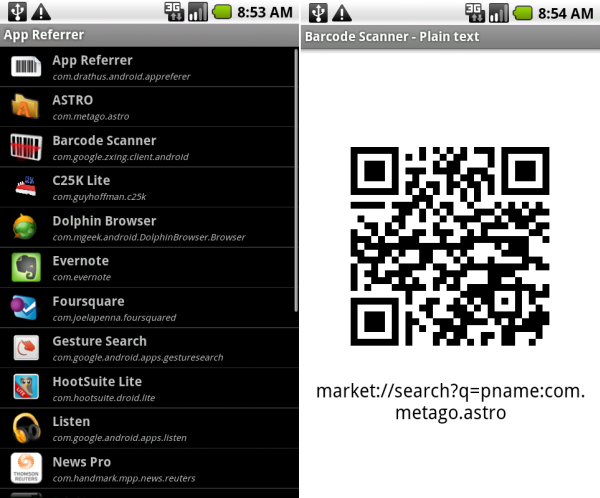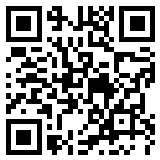
Everywhere you look at the South by Southwest conference this week, you see QR codes. The square "quick response" codes turn URLs, vCards, or any kind of text into a jumble of pixels that you can scan onto your smartphone instantaneously, no typing required. At SXSW, QR codes appeared on flyers, postcards, business cards, t-shirts, stickers, and swag. Organizers of the Austin gathering for film, music, and Web geeks even included a QR code on every registrant's badge to cut down on paper waste and manual data entry.
The SXSW site explains:
When you meet someone at an event, let them scan your badge with their smart phone, and they will automatically be following you on [the conference's social network] my.SXSW, where they can message you or access your contact information. Hopefully, this will cut down on the paper footprint of SXSW by reducing the need for business cards.
From there you can export all your SXSW contacts to your address book, email, or contacts application of choice.
QR codes could be just a passing SXSW fad–unless Facebook introduces them to a wider audience. Leaked screenshots indicate Facebook's experimenting with profile or status QR code generation on fan pages, according to TechCrunch. Imagine a QR code that instantly makes the person scanning it a fan of a brand, company, or personality on Facebook without ever typing a URL.
Google's also been encouraging the use of QR codes. Their "Favorite Places" campaign puts QR codes in the windows of local businesses that point to their online listing page. Google's mobile operating system Android has also helped along QR code adoption. Since the Android Market is available only on the small screen, it's common for users to find an app by scanning its code from a Web page or another phone's screen. This t-shirt, which features a QR code promoting an Android-focused Web site, was a SXSW giveaway.

While QR codes have reached a mainstream Japanese audience, in the U.S. QR code usage is limited to alpha geeks–and not all of them are sold on the idea. At SXSW, blogger Robert Scoble wore a t-shirt with a QR code that pointed to his Twitter feed, and talent agent George Ruiz encoded his contact info into a QR code. But some geeks are skeptical of the awkward technology. Many think QR codes are gimmicky, clumsy, not used well or enough, or that they're "a solution looking for a problem."
Still, if you want to experiment with QR codes, you'll need a couple of tools.
First, install a QR scanner app on your smartphone. Search the Web for "QR Reader" and the model of your phone to find a scanner app; they're available for the iPhone, Windows Mobile, Nokia, BlackBerry, and other app-based phones with a camera built in. (I use an Android app called simply "Barcode Scanner.")

Once you've got a scanner installed, point it at a code to give it a try, like this one:

(Hint: this code contains a URL that will bring you to the mobile version of the site you're reading right now.)
Second, make your personal or company QR code. This QR code generator can embed a URL, text, a phone number, or an addressed and ready-to-send SMS message into a QR code. Two things to keep in mind when you're generating a QR code: the more data you stuff into your code, the smaller its pixels will be, and the more sensitive the scanners will have to be to read it accurately. Second, if you're encoding a URL, make sure it's a site that will load well on a mobile phone browser. Here's more on best practices for using QR codes in your business.
Finally, if there's no scanner for your model phone but you happen upon a QR code online, enter it into this online decoder to see its contents.
Source: https://www.fastcompany.com/1585822/what-business-card-just-scan-my-qr-code
Posted by: ramonjagielloe0198301.blogspot.com